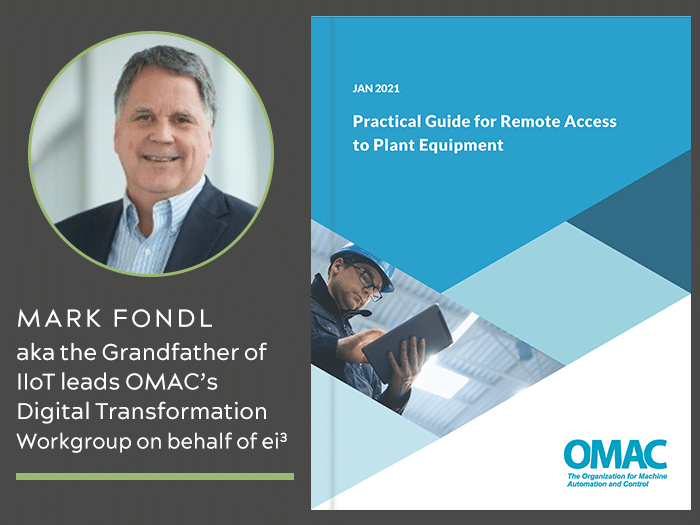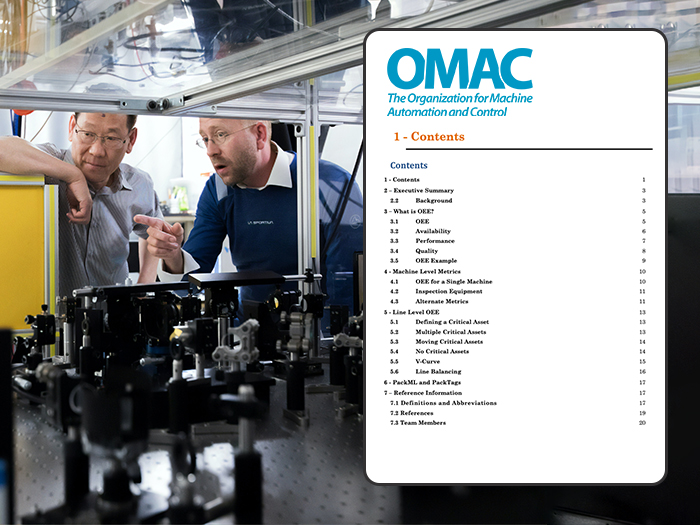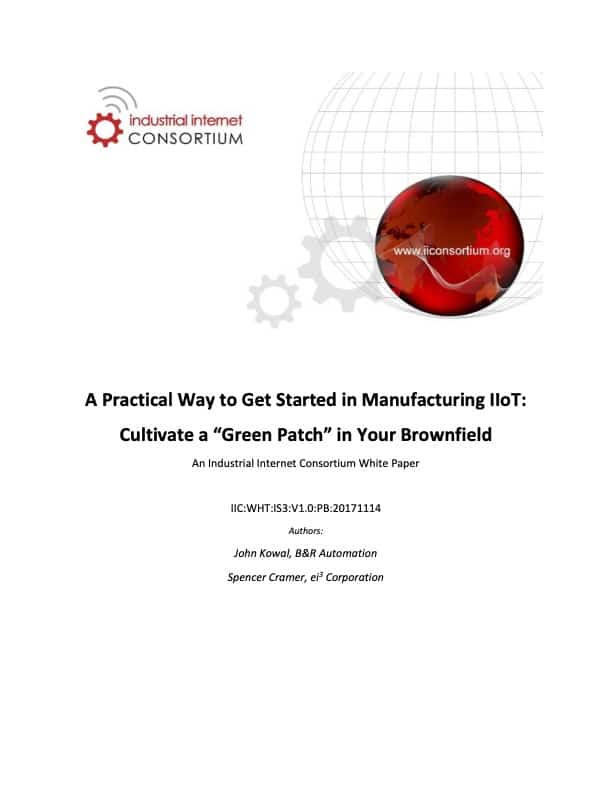INDUSTRY COLLABORATIONS
ei3’s industry initiatives encourage the use of the Industrial Internet of Things (IIoT) and Artificial Intelligence (AI) to meet the growth and sustainability challenges of the 21st century.


SHAPING THE FUTURE WITH TRANSFORMATIVE INDUSTRY INITIATIVES
In partnership with OMAC, we empower manufacturers with secure and efficient production methods through innovative approaches
ETHERNET WORKGROUP
30+ industry experts offer insights for efficient Ethernet network deployment in manufacturing plants. The guide promotes establishing a common language and shared objectives between IT/OT teams, addressing challenges such as network segmentation, security, support, etc.
CYBER RESILIENCE ACT TASK FORCE
ei3 leads OMAC’s Cyber Resilience Act (CRA) Task Force to help businesses comply with EU’s CRA regulations that will safeguard their products and customers. New participants are welcome to join.
DATA GOVERNANCE WORKGROUP
This guide offers a practical, real-world approach to managing plant floor data. From creating a common data dictionary, to identifying sources and applications of data, to storage and compliance, the Data Governance Guide covers the entire data life-cycle.
REMOTE ACCESS WORKGROUP
ei3 spearheads global OMAC Workgroup to define best practices for secure Remote Access; Releases comprehensive guide covering evolution, technologies, barriers, architecture, liability, and risk reduction.
SECURE REMOTE ACCESS WORKGROUP
ei3 leads OMAC workgroup addressing different methods for remote connection and how they can be configured to provide protection from cyberattacks. The guide presents practical, field-tested methods for reducing cybersecurity-related risk.
OEE IMPLEMENTATION GUIDE
In this guide, Craig Rowles, ei3‘s Executive Vice President, offers best practices for precise OEE measurement and tracking to maximize the accuracy and utility of collected data.
Discover ei3's initiatives with various other industry leaders advancing sustainable and efficient manufacturing practices
IEEE World Forum Publication: Transforming Industrial Efficiency and Preventing Costly Downtimes using AI
In this technical paper, published and presented at the IEEE World Forum on the Internet of Things in April 2019, ei3 presents the benefits of using Artificial Intelligence (AI) to understand the well-being of industrial machines, production lines, and plants. Drawing on vast amounts of machine data over extended periods, new algorithms based on machine learning can interpret the data and alert operators about impending issues that affect machine performance.
The paper also addresses various problems with using AI algorithms developed in a laboratory on the shop floor. The noise and other perturbations contained in process data can interfere with the calculations being carried out by the algorithms, resulting in missed events and false predictions. Clean data, namely data with little or no noise and discontinuities, is required to detect patterns reliably. At ei3, we recognized this problem early on and developed adaptive cleaning algorithms to first remove these perturbations from the data before applying pattern detection. The result is AI in action, helping manufacturers boost productivity and avoid costly downtimes and repairs.
Groundbreaking presentation in 2012 on low-carbon approaches for the packaging industry
In September 2012, Spencer Cramer delivered a groundbreaking presentation to the Sustainable Packaging Coalition outlining how organizations can create more sustainable packaging by adopting IIoT. He explained how the industrial internet can enable manufacturers to:
- Discover new ways to reduce energy consumption while maintaining output, thereby realizing significant cost savings and increasing sustainability.
- Collect accurate quantitative sustainability and carbon footprint data to validate their commitment to continual improvement.
- Strengthen competitiveness through voluntary compliance with the ISO 50001 standard for energy management or other well-known standards, including ISO 9001 or ISO 14001.
Outlined an alternative approach to cultivating a “Green Patch” in Your Brownfield

Spencer Cramer from ei3 and the late John Kowal from B&R collaborated with the Industrial Internet Consortium (IIC) to define an approach to get the benefits of digitization and IIoT to existing “brownfield” sites.
When it comes to the Industrial Internet of Things (IIoT), there is intense interest in getting more productivity out of existing assets – what is referred to as the brownfield. One problem is that management expectations for payback can be extremely unrealistic for equipment ranging from 10 to 30+ years old.
This whitepaper emphasizes the importance of a green patch environment in unlocking opportunities for integrated machine learning, predictive insights, and applying analytics to show the impact of IoT optimization to drive revenue, cut costs and innovate your operations.










